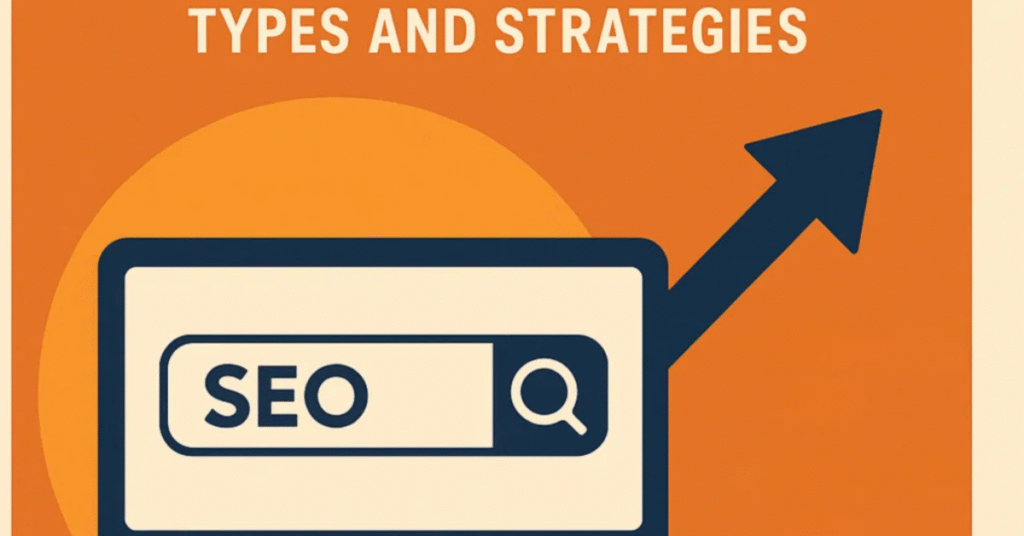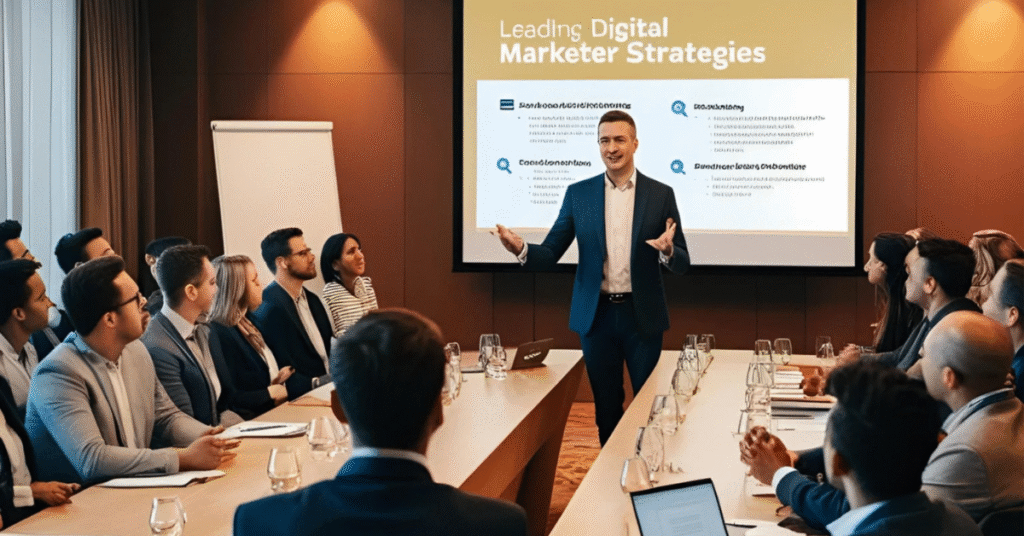In today’s hyper-connected world, where billions of people spend a significant portion of their lives online, digital marketing has emerged as one of the most powerful tools for businesses to reach, engage, and convert customers. From small startups to multinational corporations, everyone is investing in digital strategies to drive growth and stay competitive. But exactly what is digital marketing, and why is it so important?
This blog explores everything you need to know about what is digital marketing. Whether you’re a complete beginner or someone looking to refine your understanding, this comprehensive guide will walk you through its evolution, core components, benefits, challenges, and future trends.
The Evolution of Marketing: From Traditional to Digital
Before the rise of the internet, traditional marketing reigned supreme. Brands communicated with their audiences through television commercials, radio jingles, newspaper ads, and billboards. While effective in their time, these methods lacked the precision, personalization, and measurability that businesses crave today.
The digital revolution changed everything. In the 1990s, email marketing began gaining traction. Soon after, search engines like Yahoo and Google opened the door for search engine marketing. As internet usage soared in the 2000s, social media platforms like Facebook, Twitter, and YouTube emerged, transforming marketing into a two-way conversation. Mobile devices, apps, and advanced analytics further accelerated the shift.
Today, digital marketing isn’t just a subset of marketing—it is the foundation. Businesses are now able to engage directly with consumers across multiple digital touchpoints, making marketing more interactive, measurable, and cost-effective than ever before.
What Is Digital Marketing?

At its core, digital marketing refers to any marketing activity that uses digital channels to promote products or services. These channels include websites, search engines, social media, email, mobile apps, and more. Unlike traditional marketing, which often broadcasts a message to a broad audience, digital marketing allows for highly targeted and personalized communication.
Digital marketing encompasses a wide array of strategies and tactics, each serving different purposes—from increasing brand awareness and generating leads to nurturing customer relationships and driving conversions. Because of its dynamic and data-driven nature, it enables marketers to track every click, impression, and conversion in real time.
Core Components of What Digital Marketing Is
Search Engine Optimization (SEO)
SEO is the process of optimizing your website so that it ranks higher in search engine results pages (SERPs). It involves technical configurations, content creation, and link-building practices that make your site more appealing to search engines like Google.
There are three main pillars of SEO:
- On-page SEO involves optimizing the content and HTML source code of a page. This includes keyword usage, meta descriptions, headers, and internal linking.
- Off-page SEO focuses on acquiring high-quality backlinks from reputable websites, signaling to search engines that your content is trustworthy.
- Technical SEO ensures that your website is easy to crawl and index. It includes optimizing site speed, mobile responsiveness, and structured data.
SEO is a long-term investment, but its impact on visibility and organic traffic can be substantial when executed well.
Content Marketing
Content marketing is the strategic creation and distribution of valuable content to attract, inform, and engage a specific audience. Rather than directly promoting a product, content marketing aims to provide useful information that builds trust and authority.
Common content formats include:
- Blog posts and articles
- Videos and webinars
- Infographics and eBooks
- Case studies and whitepapers
Content marketing supports other areas like SEO, social media, and email marketing by delivering consistent, relevant content that meets user needs at every stage of the buyer’s journey.
Social Media Marketing (SMM)
Social media marketing involves using platforms like Facebook, Instagram, LinkedIn, and Twitter to promote your brand and connect with your audience. Social media allows businesses to humanize their brands, share updates in real-time, and engage in meaningful conversations.
Effective social media marketing includes:
- Developing a content calendar for regular posting
- Using paid social ads to target specific demographics
- Leveraging user-generated content and influencer partnerships
- Analyzing engagement metrics like shares, likes, and comments
SMM is especially powerful for brand building and customer loyalty.
Email Marketing
Despite the rise of newer digital channels, email marketing remains one of the most cost-effective and conversion-rich tools in a marketer’s toolkit. It enables personalized communication directly to a user’s inbox.
A successful email marketing strategy includes:
- Growing and segmenting your email list
- Crafting compelling subject lines and calls-to-action
- Setting up automated workflows and drip campaigns
- Measuring metrics such as open rate, click-through rate, and ROI
With the right approach, email marketing can nurture leads, retain customers, and drive repeat sales.
Pay-Per-Click Advertising (PPC)
PPC is a model of online advertising where advertisers pay a fee each time their ad is clicked. The most popular PPC platform is Google Ads, but PPC also includes display ads, YouTube video ads, and sponsored posts on social media.
PPC offers several advantages:
- Instant visibility in search engine results
- Highly targeted based on keywords, location, interests, and behavior
- Full control over budget and bidding strategies
A well-optimized PPC campaign can deliver immediate traffic and conversions while supporting long-term digital goals.
Affiliate Marketing
Affiliate marketing is a performance-based model where affiliates (partners, influencers, or bloggers) earn a commission for driving traffic or sales to your website. It’s a win-win because businesses only pay for results, and affiliates earn revenue by promoting relevant products.
Popular affiliate platforms include Amazon Associates, ShareASale, and Commission Junction. Effective affiliate marketing requires building strong relationships and providing partners with promotional resources.
Influencer Marketing
Influencer marketing involves collaborating with individuals who have a strong online presence and loyal followers. By aligning with influencers who resonate with your target audience, you can leverage their credibility to drive awareness and sales.
When choosing influencers, consider:
- Niche relevance and audience alignment
- Engagement rate, not just follower count
- Content quality and authenticity
- Clear deliverables and FTC compliance
Influencer marketing is especially effective for product launches and lifestyle branding.
Mobile Marketing
With the majority of internet usage happening on smartphones, mobile marketing is no longer optional. It includes strategies like:
- SMS and MMS campaigns
- Mobile-optimized websites
- In-app advertising and push notifications
- Location-based targeting
Mobile marketing ensures that your brand stays accessible and relevant to users on the go.
Marketing Automation & AI
Marketing automation tools like HubSpot, ActiveCampaign, and Mailchimp help streamline repetitive tasks like email sequences, lead nurturing, and customer segmentation. When combined with AI, marketers can deliver hyper-personalized experiences based on real-time behavior and preferences.
AI also powers chatbots, predictive analytics, dynamic content, and smarter ad targeting, enabling marketers to scale their efforts more efficiently.
Benefits of Digital Marketing
Digital marketing offers a multitude of advantages over traditional marketing approaches:
- Global Reach: Reach potential customers anywhere in the world
- Cost-Effective: Lower entry costs and higher ROI
- Measurable Results: Real-time tracking with tools like Google Analytics
- Personalization: Deliver tailored experiences based on behavior and interests
- Scalability: Adjust campaigns quickly based on performance
- Customer Engagement: Build relationships through interactive content and social channels
Challenges and Misconceptions
Despite its many benefits, digital marketing is not without challenges:
- SEO Takes Time: It’s a long-term strategy, not a quick fix
- Algorithm Dependency: Social and search algorithms can impact visibility overnight
- Privacy Regulations: Compliance with laws like GDPR and CCPA is critical
- Saturated Markets: Standing out in a crowded digital space requires creativity and strategy
- Skill Gaps: Constantly evolving technologies require ongoing learning
Common misconceptions include the idea that social media is free or that digital marketing yields instant results. In reality, success requires thoughtful planning, execution, and analysis.
How to Create a Digital Marketing Strategy
Building an effective digital marketing strategy involves several key steps:
- Set SMART Goals: Clearly define what you want to achieve—more traffic, leads, or sales.
- Understand Your Audience: Use data to build detailed buyer personas.
- Select the Right Channels: Focus on platforms where your audience is most active.
- Create a Content Calendar: Plan consistent, valuable content across channels.
- Allocate Budget Wisely: Distribute funds among SEO, PPC, content, and other priorities.
- Track and Optimize: Use tools to monitor KPIs and adjust tactics in real time.
Successful digital marketing is iterative. Test, analyze, and refine your strategy regularly.
Real-World Examples of Digital Marketing in Action
What Digital Marketing Is About:
- SEO Success: A local bakery optimized for “best cupcakes near me” and saw a 300% increase in organic traffic within six months.
- Social Media Virality: A fashion brand leveraged Instagram Reels to showcase behind-the-scenes content, resulting in a viral post that generated over 1 million views.
- Email Funnel Optimization: A SaaS startup implemented an automated onboarding email series that boosted their free-to-paid conversion rate by 25%.
These examples illustrate how the right strategy, combined with consistent execution, can yield impressive results.
The Future of Digital Marketing
Digital marketing is constantly evolving. Here’s what lies ahead:
- AI & Machine Learning: Smarter personalization and automation
- Voice Search: Optimizing content for voice-activated queries
- Augmented and Virtual Reality: Interactive experiences for product visualization
- Zero-Click Searches: Increasing importance of featured snippets and knowledge panels
- Data Privacy: Emphasis on ethical marketing and transparency
Staying ahead of trends and being adaptable will be key to maintaining a competitive edge.
Conclusion
Digital marketing has redefined how businesses connect with their customers. It’s no longer just about visibility—it’s about meaningful engagement, data-driven decisions, and delivering value at every touchpoint.
Whether you’re building your first campaign or refining an existing strategy, mastering digital marketing can propel your business toward sustainable growth. The opportunities are vast—but success comes to those who remain agile, informed, and customer-centric.




Pingback: DGmark Agency - Digital Marketing Agency In Mumbai